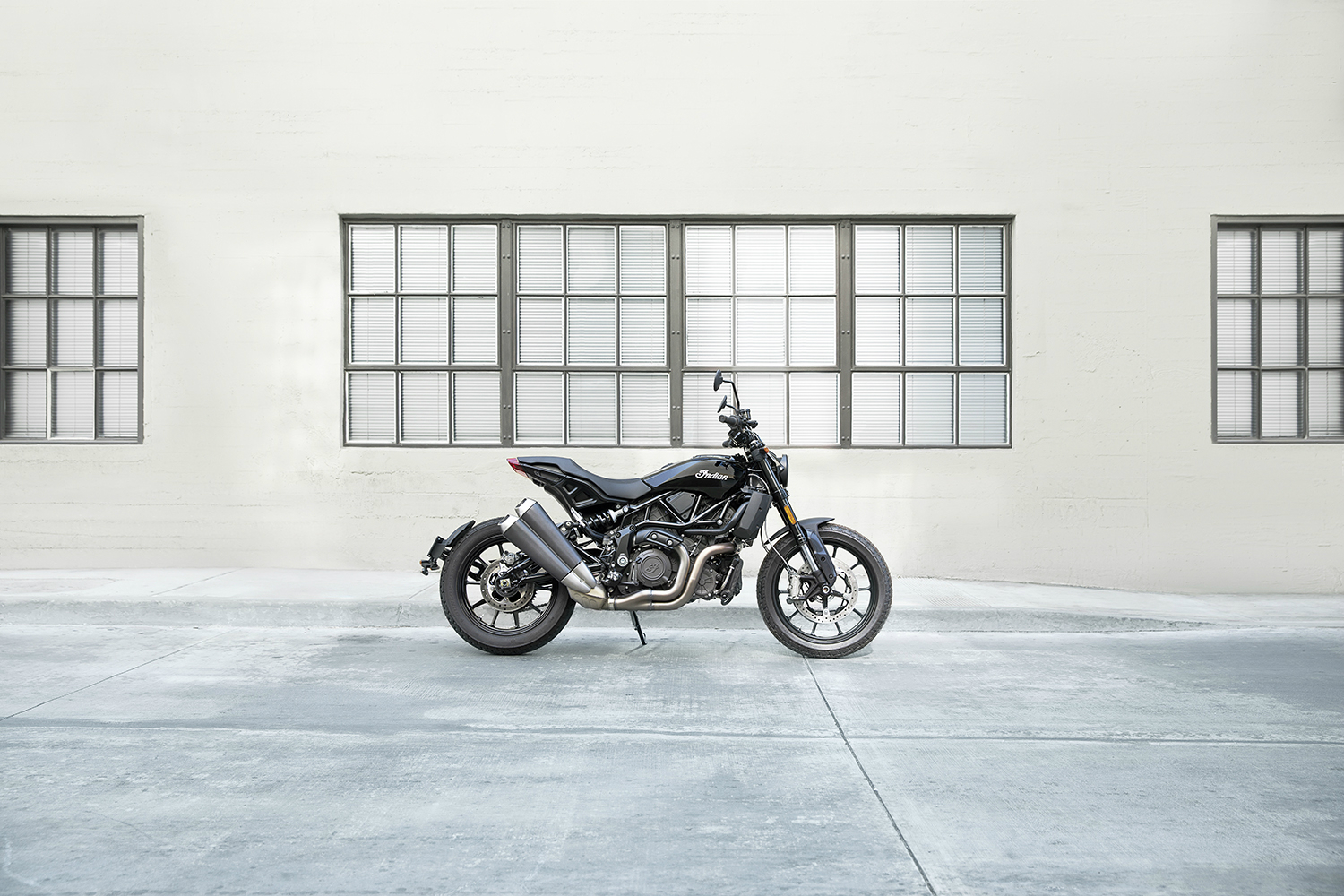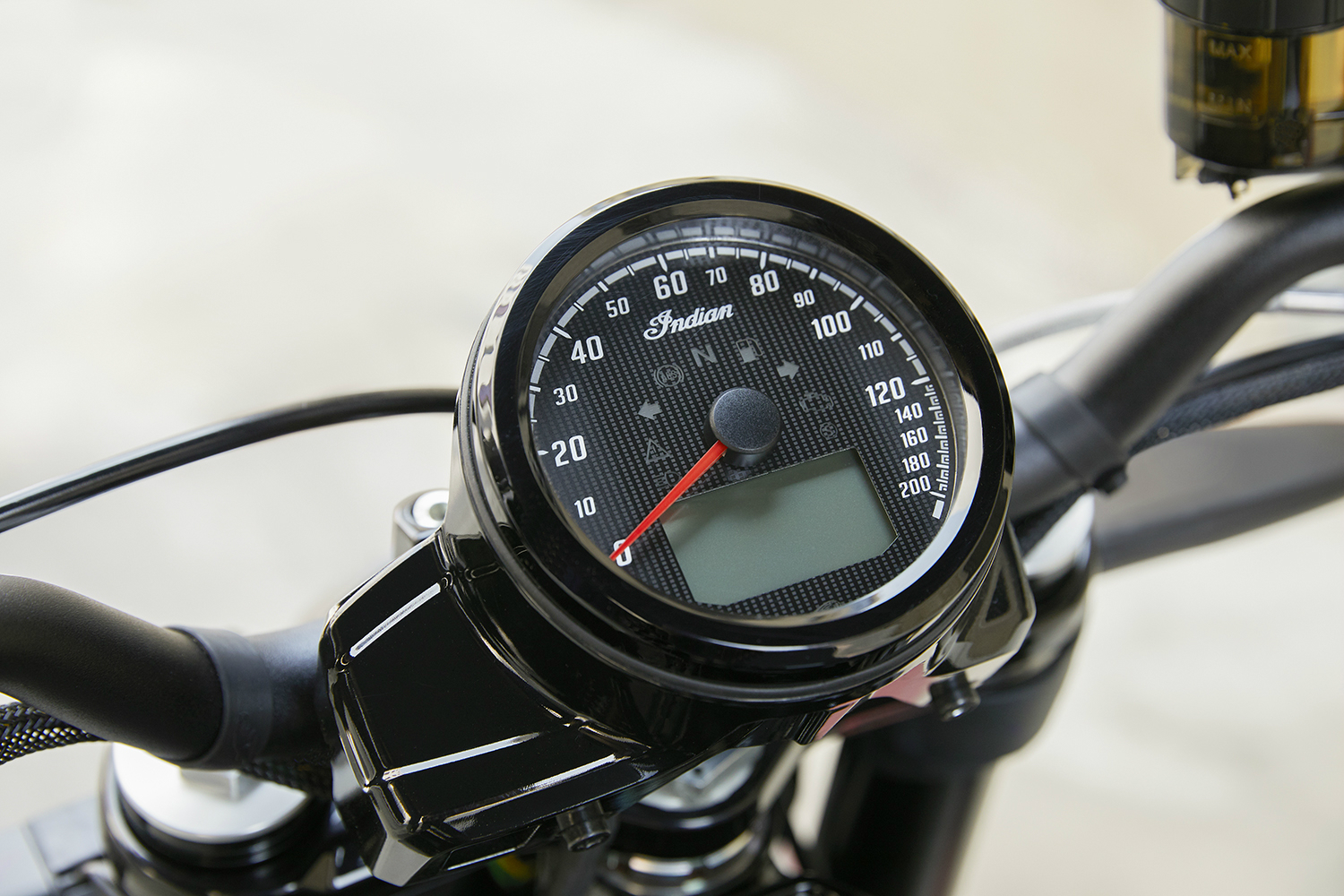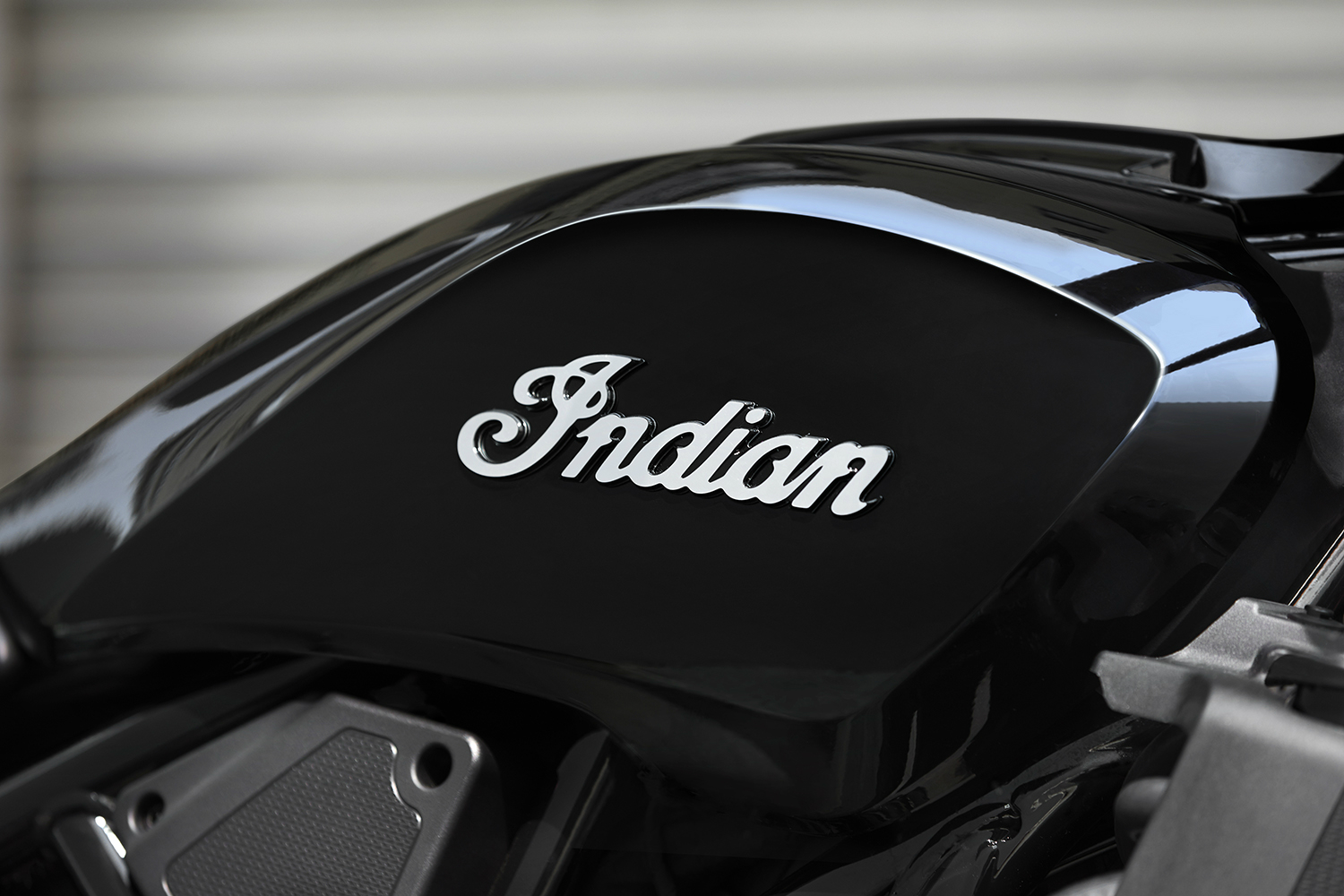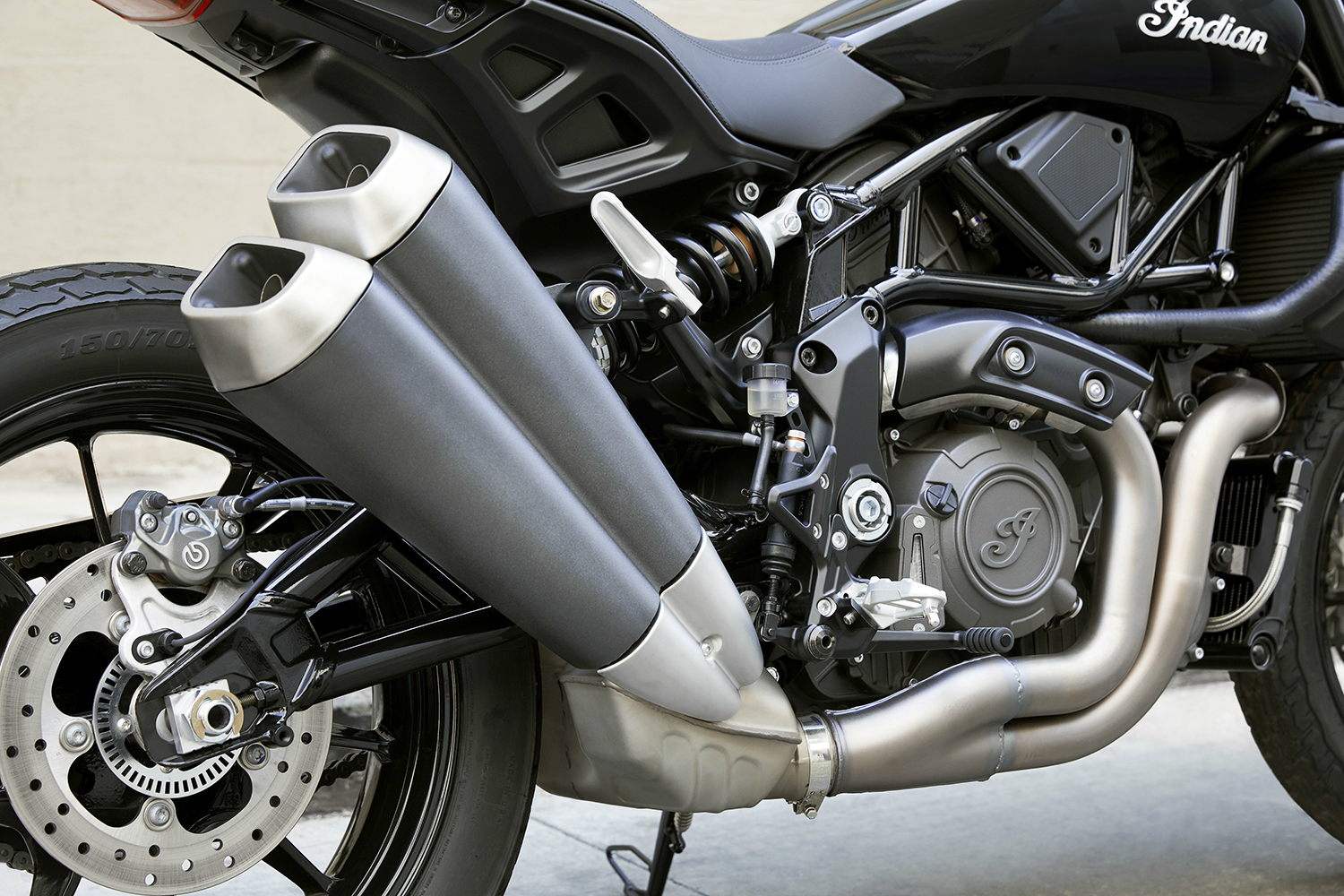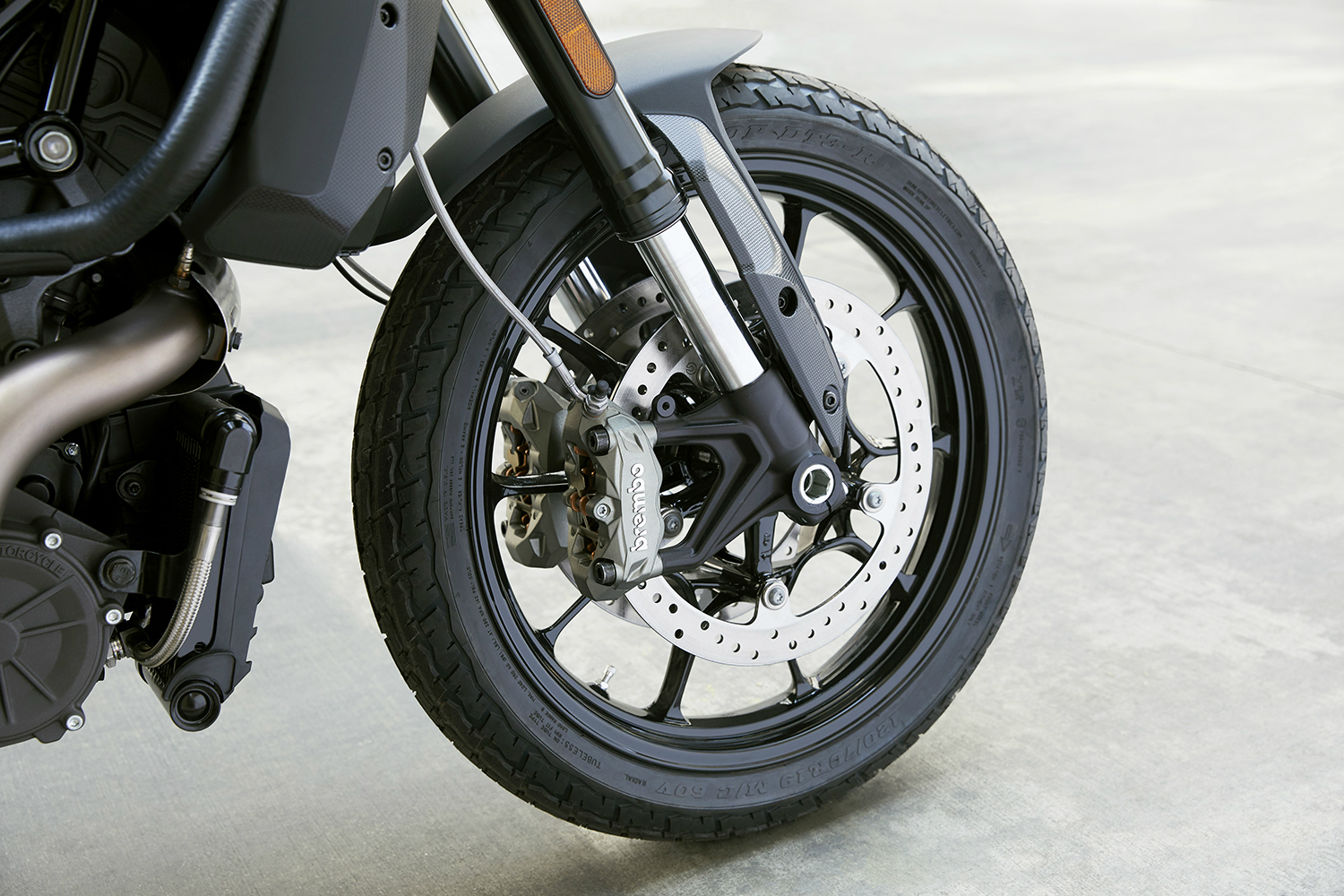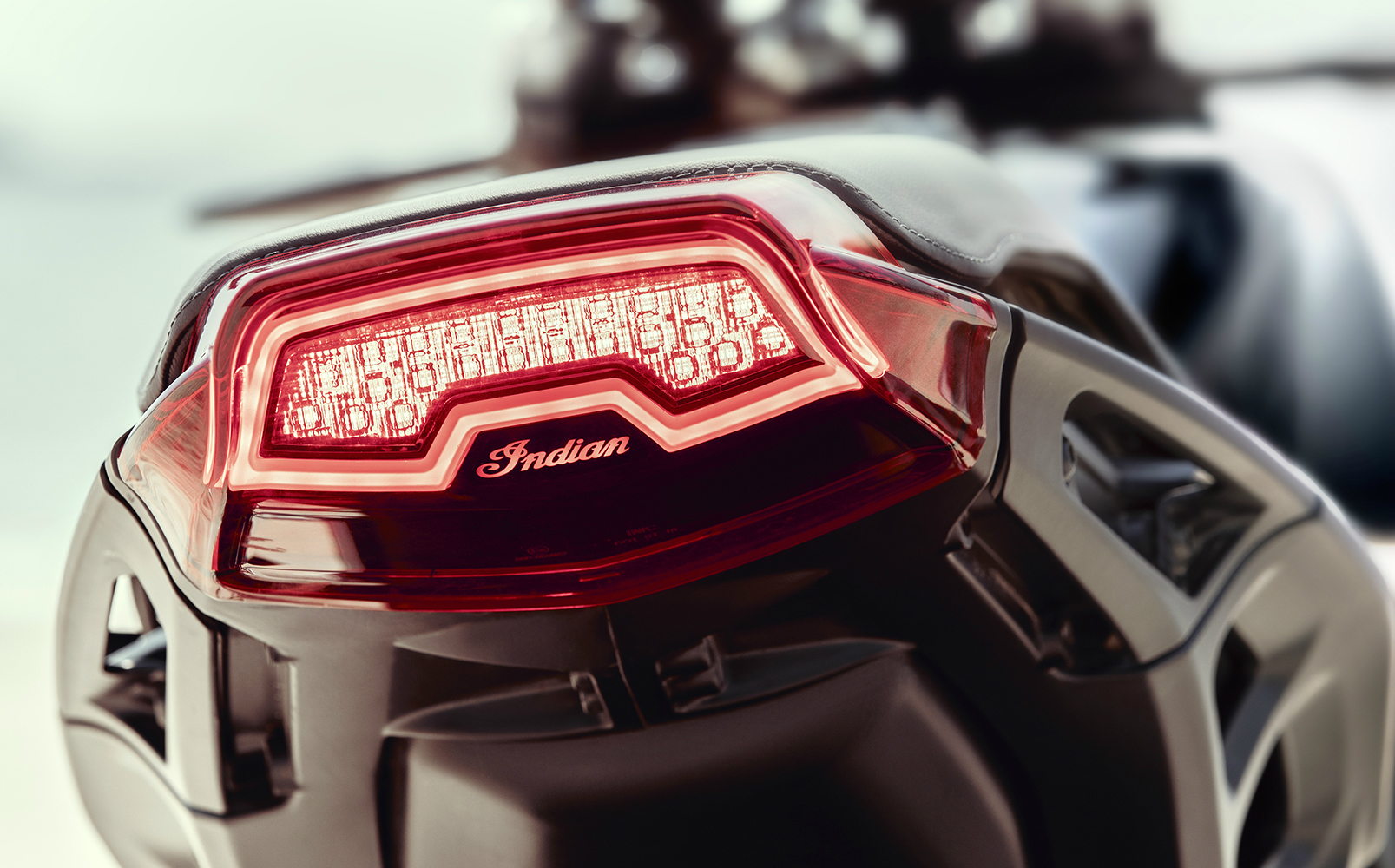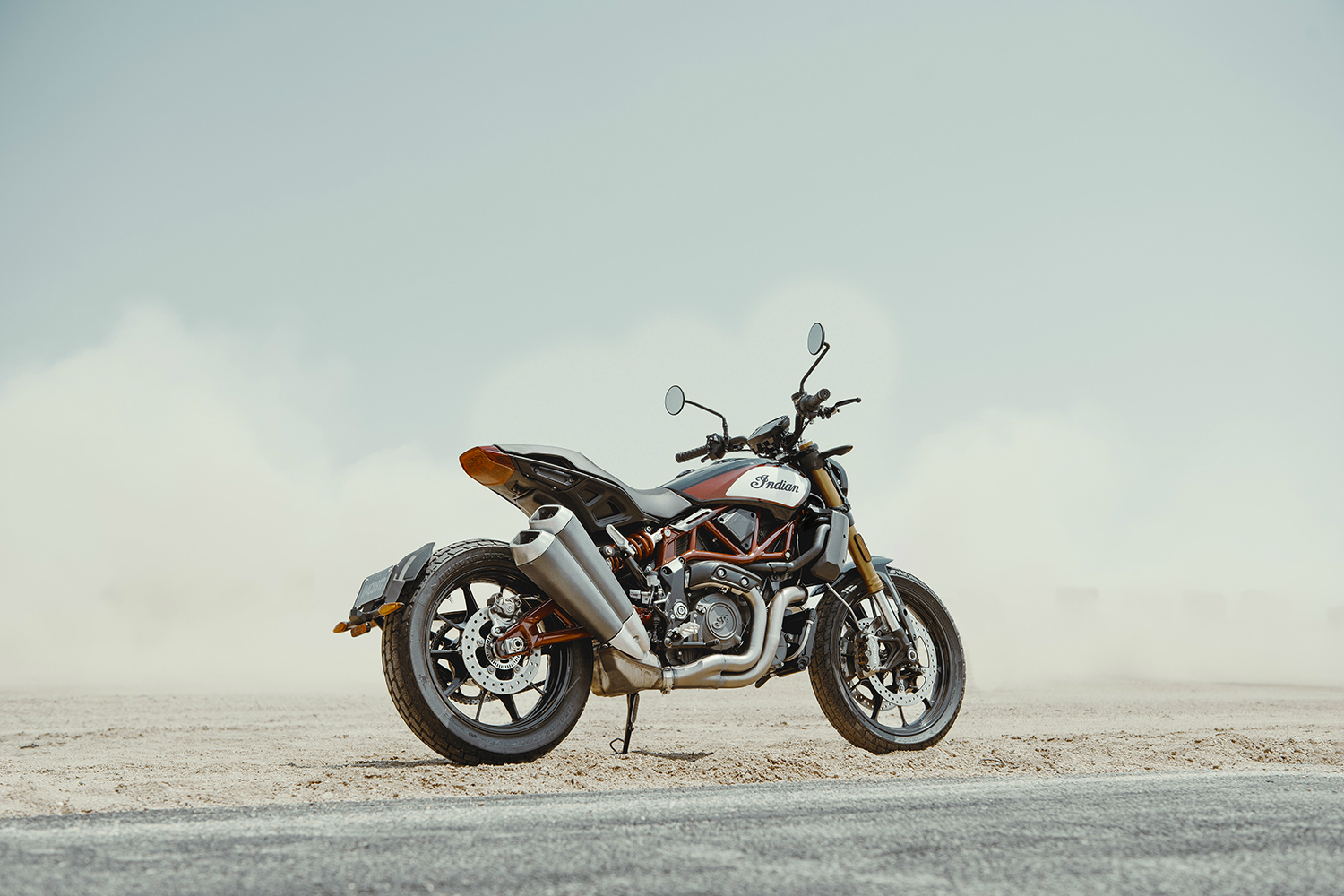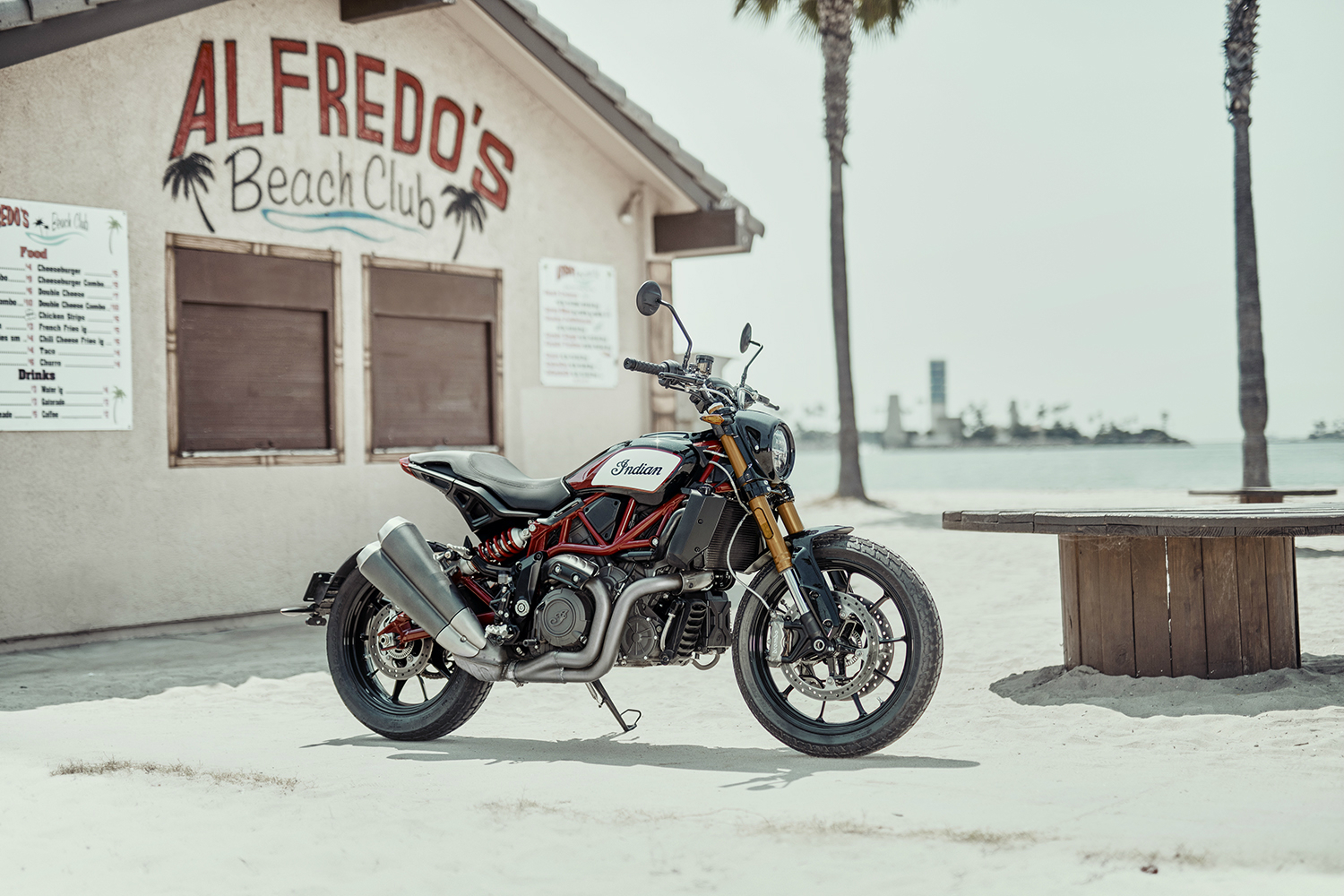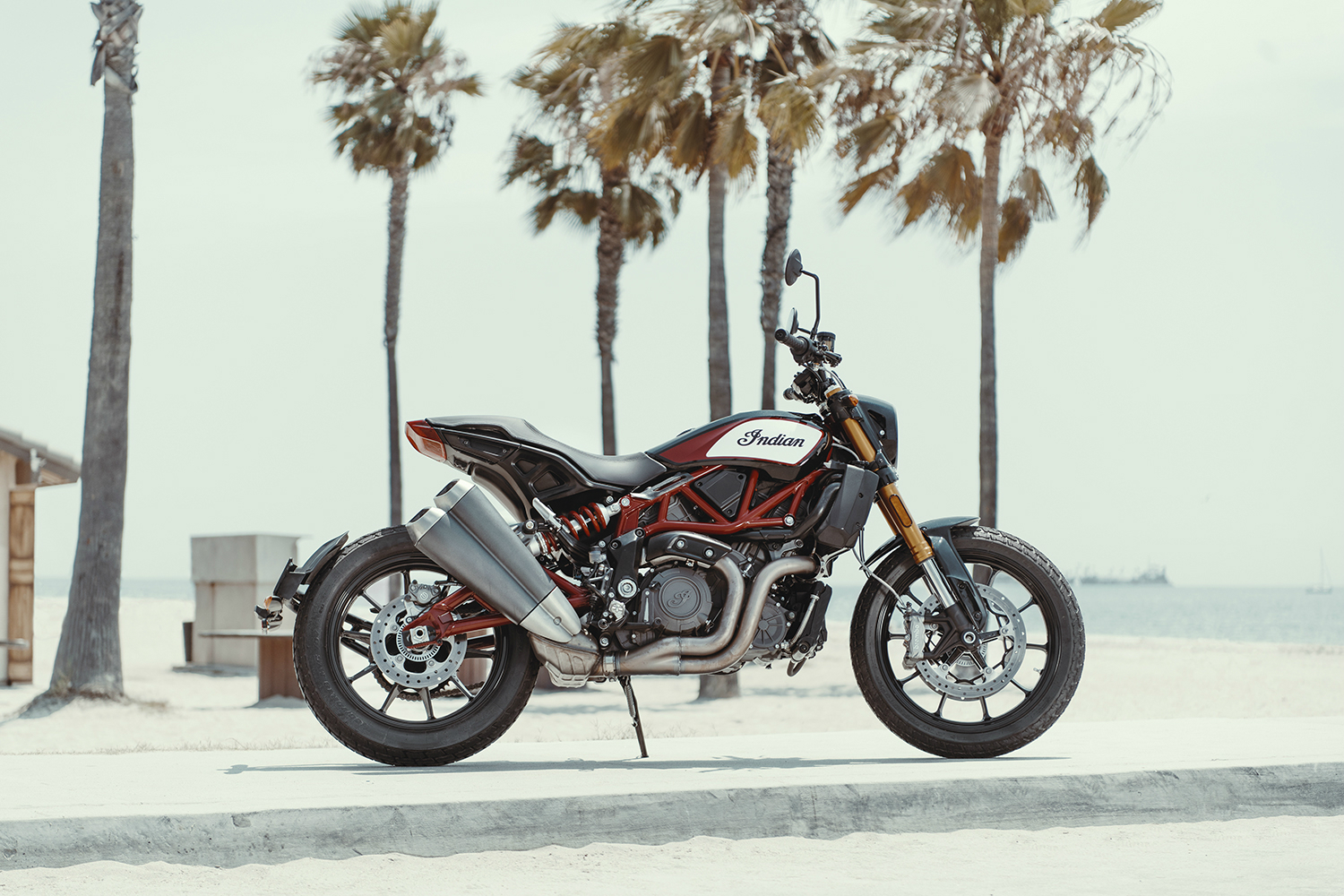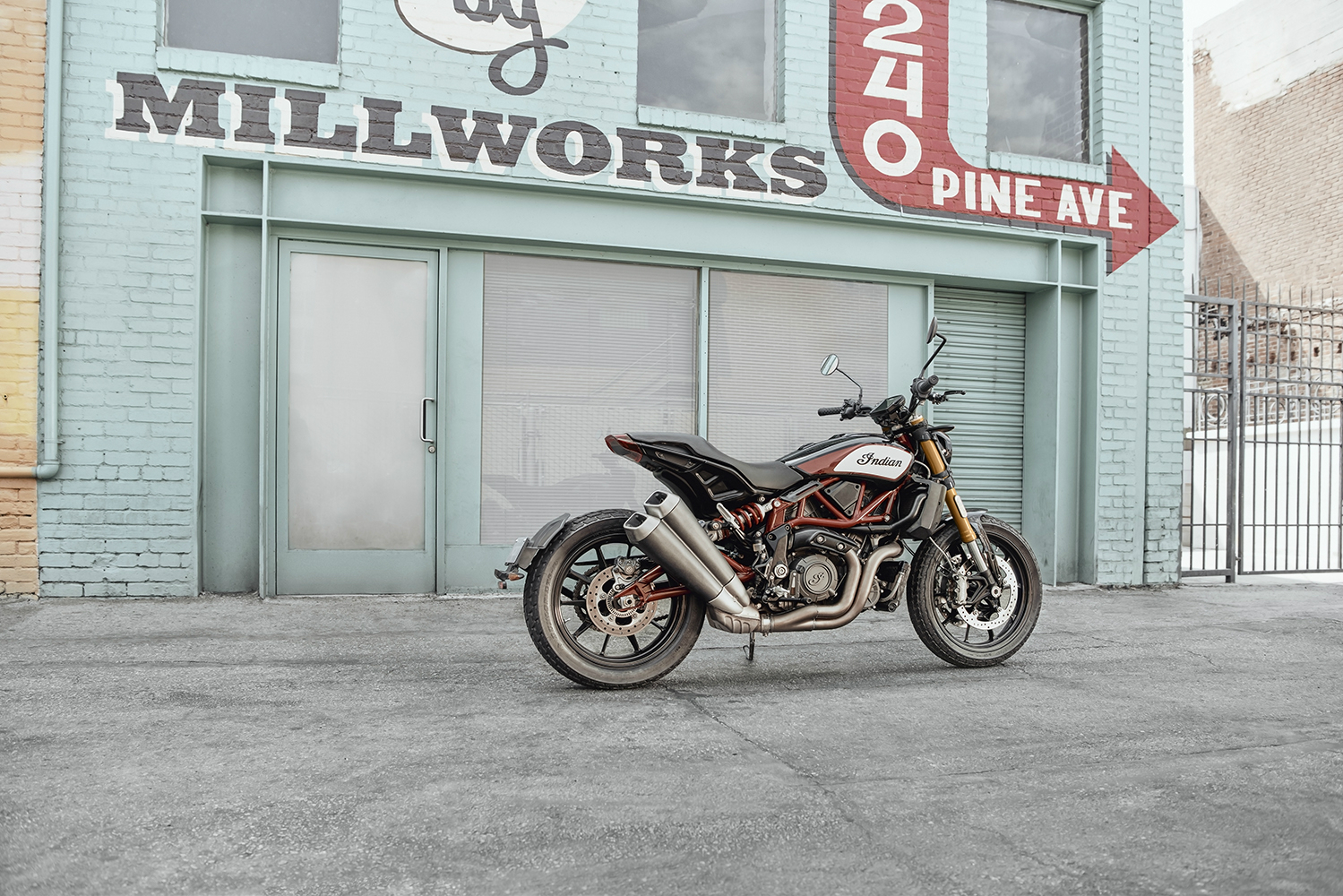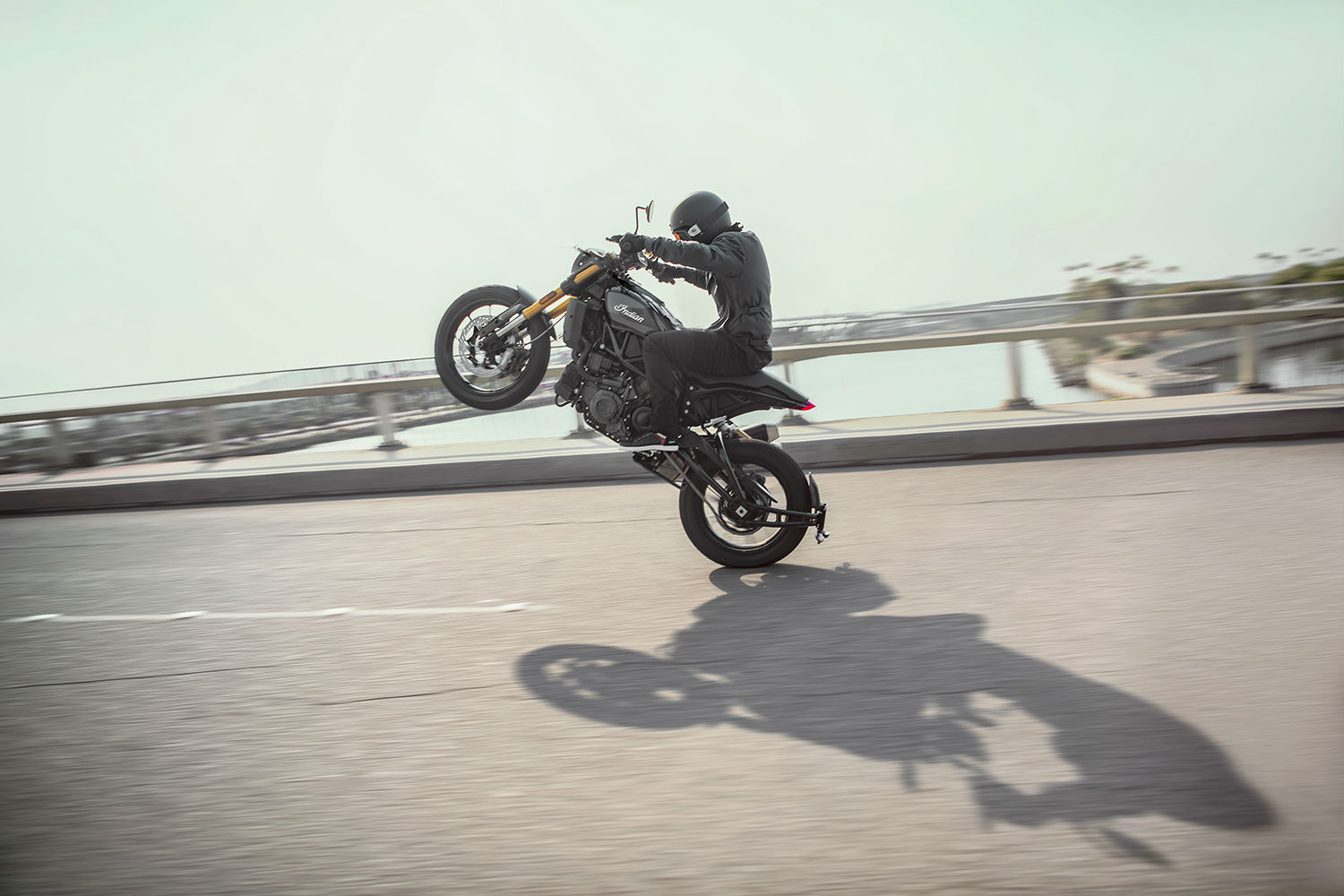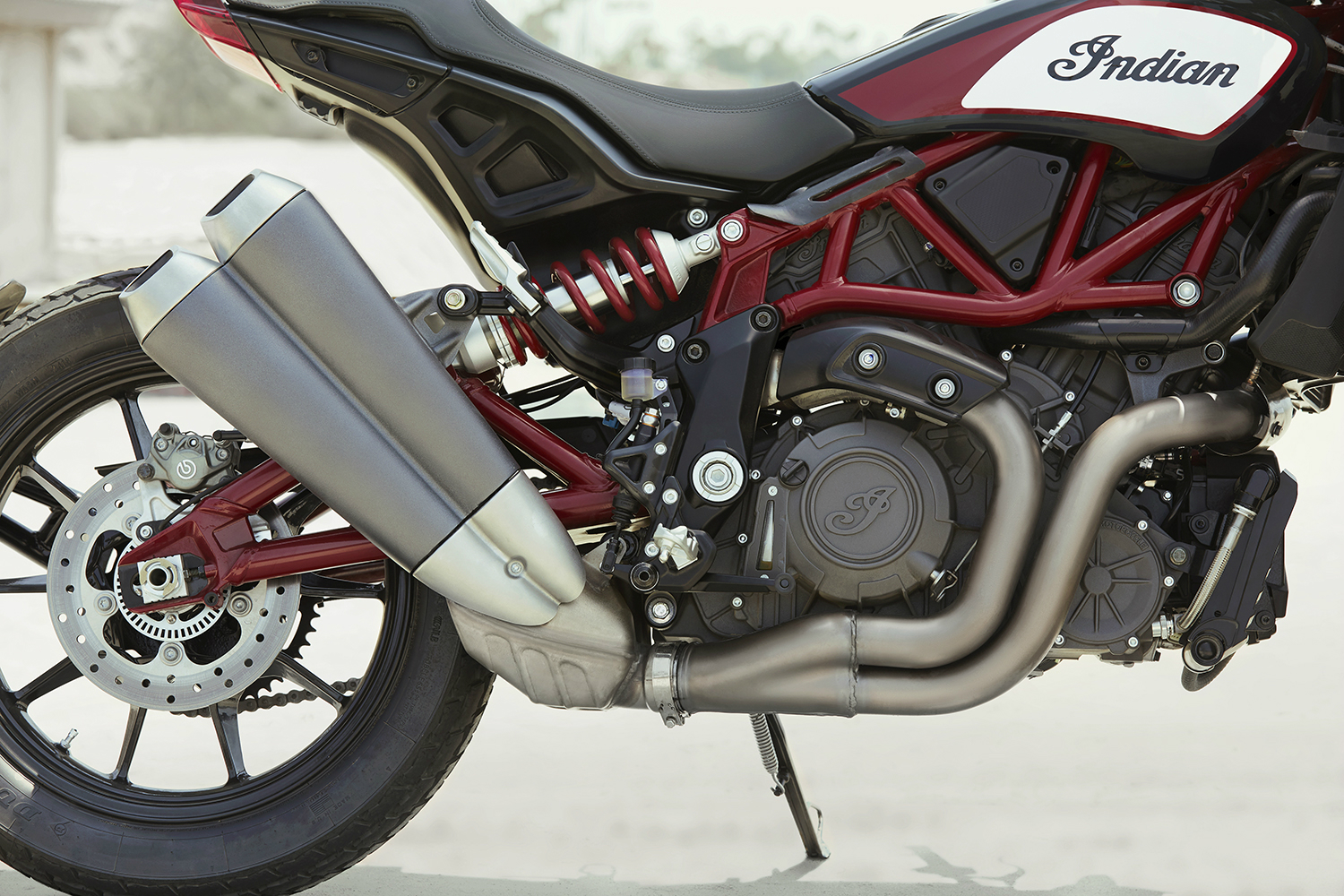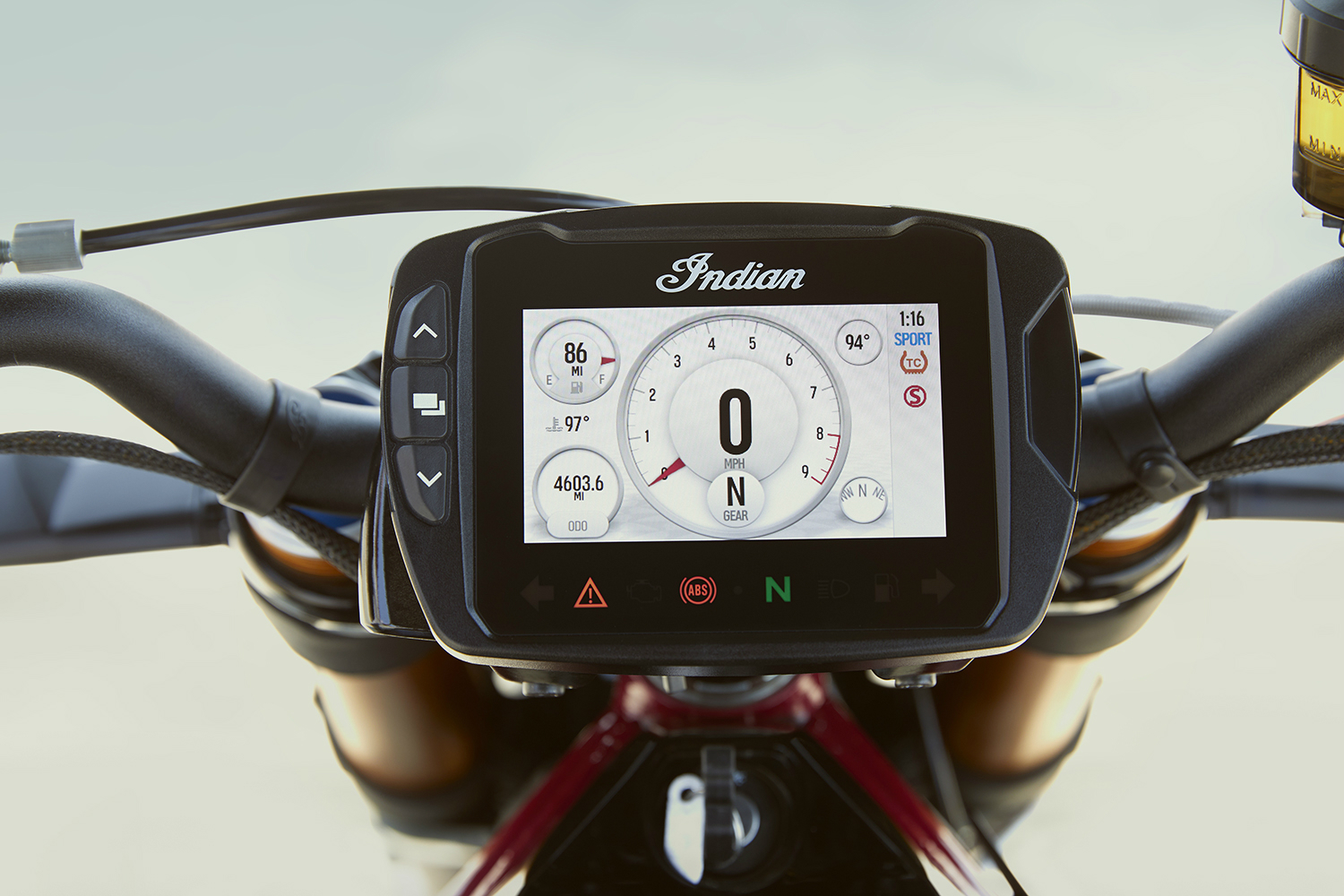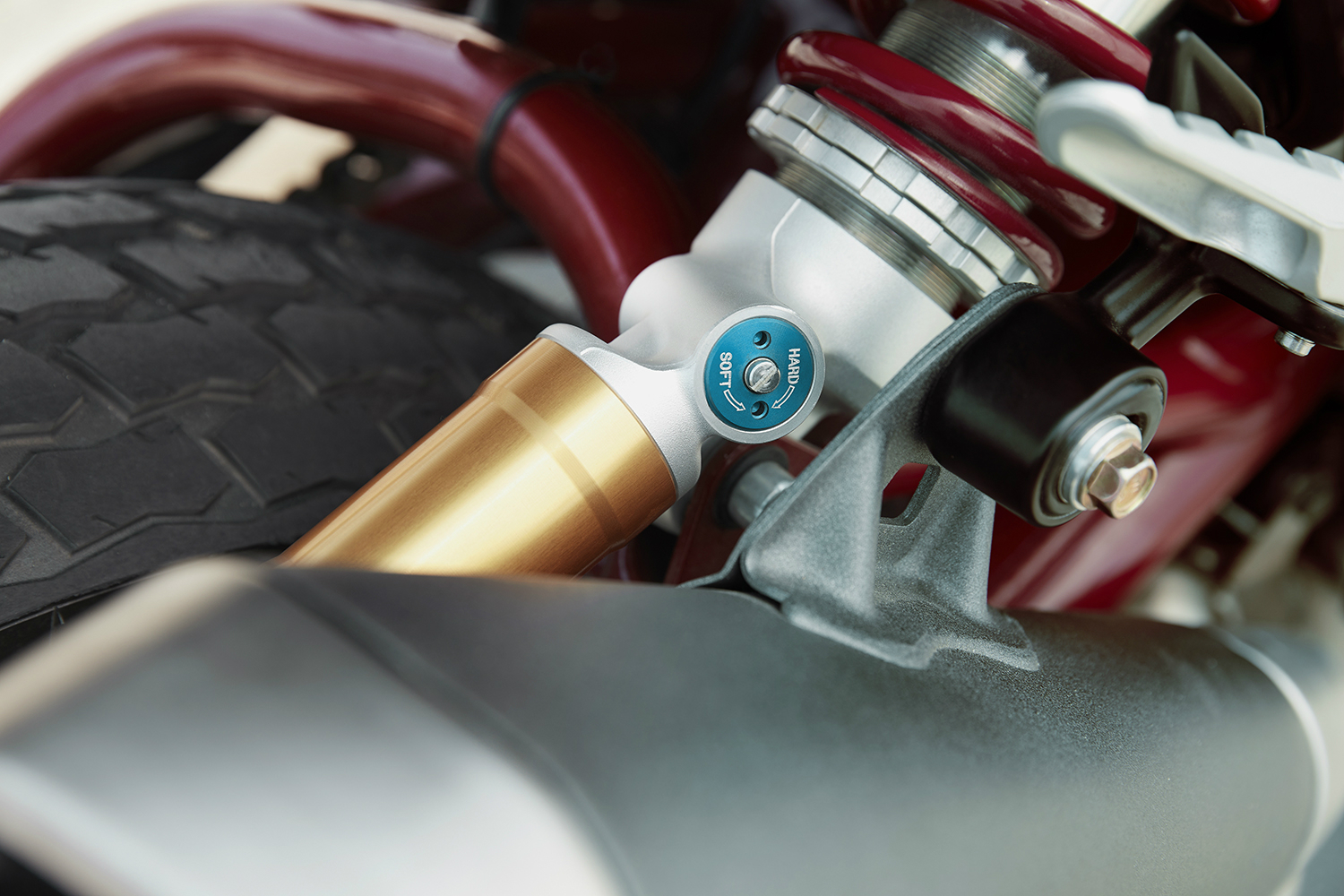After what seemed a long wait for impatient fans, Indian Motorcycle Company has introduced two production street versions of its highly successful flat-track racer.
The 2019 Indian FTR 1200 and FTR 1200 S have a larger engine than the FTR750 pro racer ride, 1,203 cubic-centimeters versus 750 ccs, but many design elements carry over from the flat tracker. The FTR1200’s new design also introduces new enthusiast features Indian intends to use this new model to appeal to performance-oriented riders worldwide.
The rep-maker and the tease
When Indian first introduced the FTR750 flat track racing motorcycle in November 2016, questions flew about a potential production street version. The FTR750 was and is a limited availability, racetrack-only, water-cooled twin.
After a 60-plus years’ absence from racing, Indian’s comeback track bike dominated the 2017 American Flat Track racing season. The FTR750 continues to be the bike no one can beat in the 2018 AFT Twins Class. As the grueling 2018 AFT season winds down, the top ten riders in overall standings in the Twins Class all ride Indian FTR750s.
Indian teased with the Scout FTR1200 one-off custom in November 2017 in Milan at EICMA, the world’s largest motorcycle show, saying it was only a concept. It was obvious, however, that America’s oldest motorcycle company was looking for feedback and gauging global interest in a different type of big V-twin motorcycle.
“Our primary focus was to ensure these motorcycles carried the same lines and form language as the FTR750 and 1200 Custom,” said Indian Motorcycle Senior Designer Rich Christoph. “We knew that’s what riders around the world fell in love with.”
The FTR 1200 – a new platform
The two new models eschew the usual feet-forward, stretched-out Indian riding position for a more upright posture. And riders will want to sit up and pay attention because this design is built for performance.
The 2019 FTR 1200’s liquid-cooled, 1,203 cc, 120 horsepower V-Twin engine is tucked in a trellis frame balanced for strength and light weight. The engine has a flat torque curve with a maximum 85 pound-feet of torque for low-end pull and predictable power as the revs build. The engines are built with ample magnesium for low weight and have a low-inertia crankshaft so the revs will spin up quickly.
Both FTR 1200s have a 6-speed constant mesh transmission with an assist and slip multi-plate clutch for fast shifts without a lot of effort.
The FTR1200s models each have dual Brembo brakes with ABS standard, inverted front suspensions, and rear suspensions that are similar but not identical to those on the FTR750 race bike. The suspensions differ on the two models but are adjustable front and rear on both.
The gas tank is located beneath the seat for a lower center of gravity, and the airbox is above the engine to enhance airflow.
Both FTR 1200 models have a 60-inch wheelbase and a 31.7-inch laden seat height with 7.2-inch ground clearance and a 43-degree maximum lean angle.
The two models also have cast 19-inch front wheels and 18-inch rear wheels, with custom Dunlop tires modeled after flat track tires. Also, both motorcycles have full LED lighting, cruise control, and fast-charge USB ports.
The FTR 1200, starting price $12,999, will be available in Thunder Black only. The FTR 1200 weighs 488 pounds dry, meaning without fuel and fluids.
2019 Indian FTR 1200 S
Performance features are identical with the FTR 1200 and 1200 S, but the S version packs in a fat list of upgrades with its $14,999 starting price. The Indian FTR 1200 S bumps up the feature list from the FTR 1200 with more color options, additional suspension adjustments, ride modes, operational controls, and a newly designed 4.3-inch Ride Command LCD high-contrast touchscreen.
The FTR 1200 S is available in Titanium Metallic over Thunder Black Pearl, Indian Motorcycle Red over Steel Gray, and a Race-Replica paint scheme that might fool an onlooker into thinking you’re riding an FTR750 race bike.
The fully adjustable suspensions front and rear include adjustments for preload, compression, and rebound, and let riders set and change their handling preferences depending on their planned ride. For example, you might set up for a softer ride around town but then tighten the suspension down if you’re going to head out to a fast ride in the desert or on the beach.
For additional safety and control, the FTR 1200S includes lean-angle sensitive stability control, wheelie mitigation control, and traction control that the rider can turn off.
Three Ride modes available only on the FTR 1200 S, Standard, Sport, and Rain, each have unique throttle response and traction control intervention.
The 2019 Indian FTR 1200 and 1200 S will be available at dealers from spring 2019.

